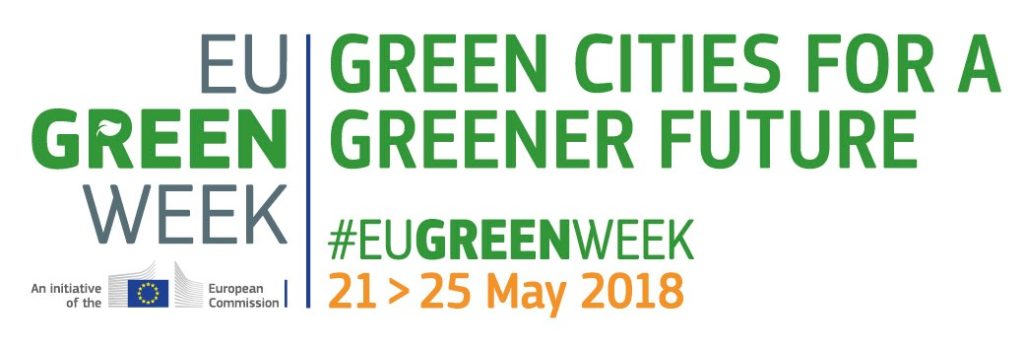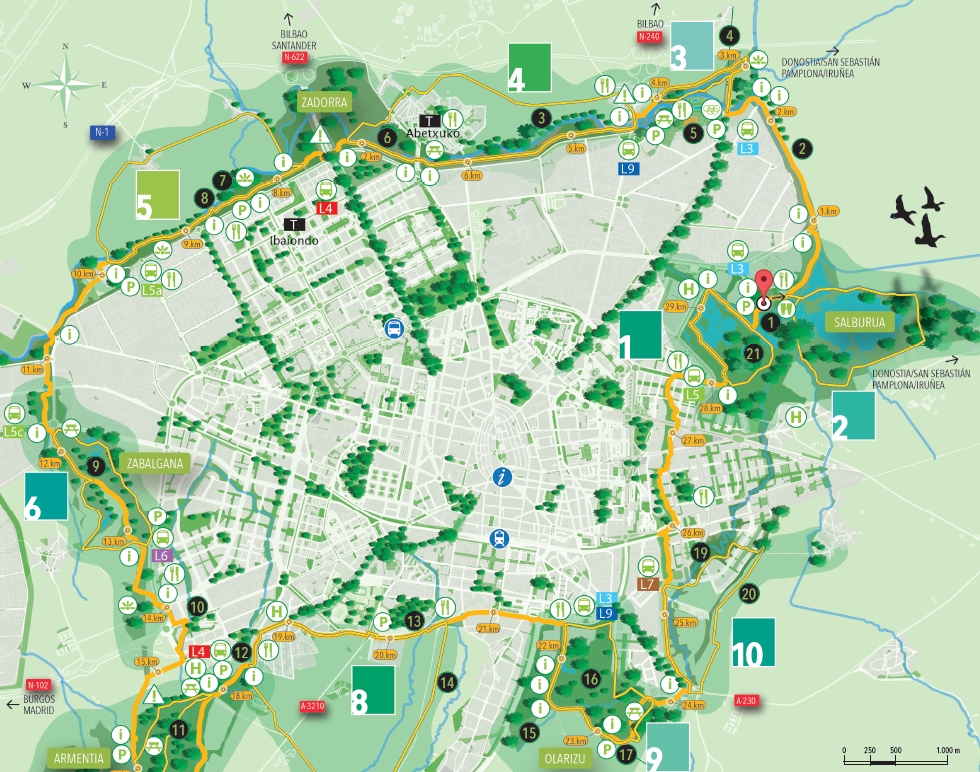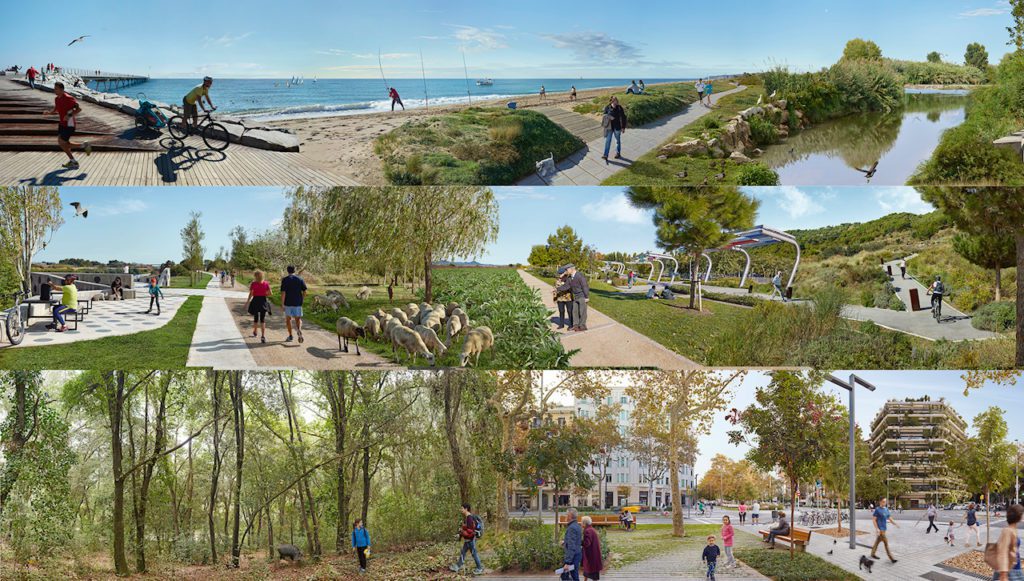Webinar: Periurban Parks – Building Green Infrastructure around Cities
On the occasion of the EU Green Week 2018 Green Cities for a Greener Future, EUROPARC is delivering a webinar on the role Periurban parks play in delivering ecosystem services and improving the livelihoods of citizens in and around cities. The webinar is an official event of the EU Green Week and the information can be seen here.
Building Green Infrastructure: from the protection of single Periurban parks towards the setting-up of a large green territorial system
- 15th May, 10:30 CEST (Central Europe Summer Time)
- Duration: 1:15hours
- Register here
The EU Green Infrastructure Strategy was launched in 2013 in order to help stop the loss of biodiversity and enable ecosystems to deliver their many services to people and nature. The green infrastructure basically consists of a strategically planned network of natural and semi-natural areas, with other environmental features, designed and managed to deliver a wide range of ecosystem services such as water purification, air quality, space for recreation and climate mitigation and adaptation. This network of green (land) and blue (water) spaces can improve environmental conditions and therefore citizens’ health and quality of life.
In the wider landscape, the EU green infrastructure is mainly constituted by the Natura 2000 network and the green corridors connecting these protected sites among them. However, in highly urbanised territories, the deployment of such green infrastructure is not an easy task. Urban sprawling and the presence of a large number of infrastructures difficult connectivity among the few open spaces left.
In the present webinar, we will showcase how two different geographical realities – a compact city of 250,000 inhabitants and a diffuse metropolitan space of 3.2 M inhabitants – are implementing their green infrastructure, starting from the protection of single pieces of land and seeking to connect them, over time, to other spaces that have followed the same process.
Case Study 1
The Green Belt: 25 years working for a multifunctional urban green infrastructure in Vitoria-Gasteiz
By Juan Carlos Escudero, Center for Environmental Studies of Vitoria-Gasteiz (CEA), Spain

The Green Belt is the result of an ambitious project initiated in the early 1990s, the main of which was to restore and recover the outlying areas of Vitoria-Gasteiz, both from the environmental and social viewpoint, in order to create a large, green area for recreational use around the city.
After 25 years of work on the project, major efforts have been made to restore the ecology and landscapes of a number of degraded areas and to prepare these for public use. As the origin of the Urban Green Infrastructure of Vitoria-Gasteiz, the Green Belt is essential for the city to operate correctly. Besides its aesthetic and ornamental function and as well as being space for leisure pursuits and social relations, it plays a fundamental role in improving the environmental quality of the urban milieu, contributing to an improvement in the general habitability of the city and providing relevant ecosystem services to the city and its inhabitants.
Juan Carlos Escudero, Biologist, has been professionally linked to the Center for Environmental Studies of Vitoria-Gasteiz (CEA), an Autonomous Organisation of the City of Vitoria-Gasteiz. For more than two decades, Juan Carlos has been involved in different action lines in the fields of environmental information, research, innovation and development applied to the urban environment. Currently, he is also head of the Information and Innovation for Urban Sustainability Unit, where he promotes the management of information and innovation-oriented to new city and territory scenarios.
Case Study 2
Barcelona Green Metropolis, ecology, leisure and production
By Jacob Cirera Val and Teresa Gómez-Fabra Gala , Area Metropolitana de Barcelona

Barcelona Metropolis is characterised by being a compact and polycentric territory, which we call “metropolis of cities”. It is composed by a mosaic of urban and environmental spaces that co‐evolve and interact with each other. The territorial extension is over 636km2 and the population higher than 3.2 million citizens and 52% of the land is mainly occupied by green infrastructure.
This green infrastructure has a great environmental and social wealth value, and it is made up of more than 60 different habitats where more than 5,300 species live, divided into different types of areas: rivers (Llobregat and Besòs), natural Parks system (Collserola, Garraf and Serra de Marina), 32 km of metropolitan beaches, metropolitan Parks network, urban parks and other green spaces integrated in the city such as streets, squares, balconies or green rooftops.
A landscape formed by the coexistence of different ecosystems (environmental and urban) that create in their boundaries or edges, fringes, limits and spaces of transition with different characteristics that establish different relations between these two realities, the urban and the environmental one, so necessarily linked.
In order to reach our goals, we need to define a new metropolitan paradigm in relation with environmental, social and economic sustainability where the biodiversity and the maintenance of ecological processes should be guaranteed, by maximizing the ecosystem services and regulating the critical points. We will have a new network of open spaces interconnected and rich in ecological values, with different possibilities of use for the leisure time and with high productive capacities, an environmental and social network that will be the main structural metropolitan system of the metropolitan territory.
Jacob Cirera Val has a degree in Environmental Sciences from Girona University and Master’s degree in Application of Geographical Information Systems and Remote Sensing in Territorial Management from the Catalan Institute of Technology. He currently works in the office of the AMB’s Urban Master Plan and is a professor of “Environment and urban sustainability” as part of the City Management Master’s degree at the Open University of Catalonia.
Teresa Gómez-Fabra Gala has a degree in Architecture from Barcelona School of Polytechnic University of Catalonia (UPC) and a Postgraduate course’s degree in Local Agroecological Dynamization from Autonomous University of Barcelona (UAB). She currently works in the office of the AMB’s Urban Master Plan and is member of the “El Tinglado”, an architect collective.
How to join?
Webinars are open not only to EUROPARC members – but to everyone with an interest in Protected Areas. Participation is free but registration is necessary. You can join in from anywhere: you will just need a device with internet connection. Learn more about EUROPARC webinars.